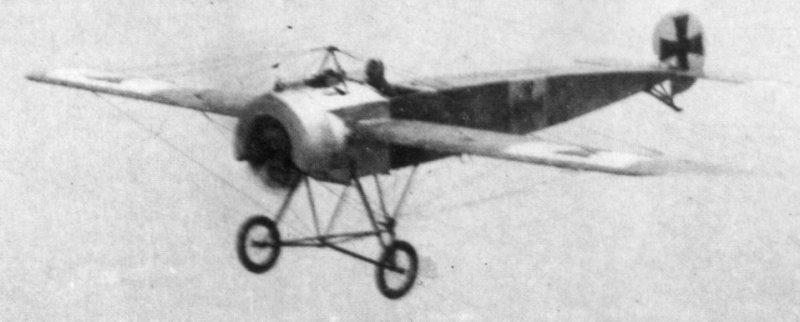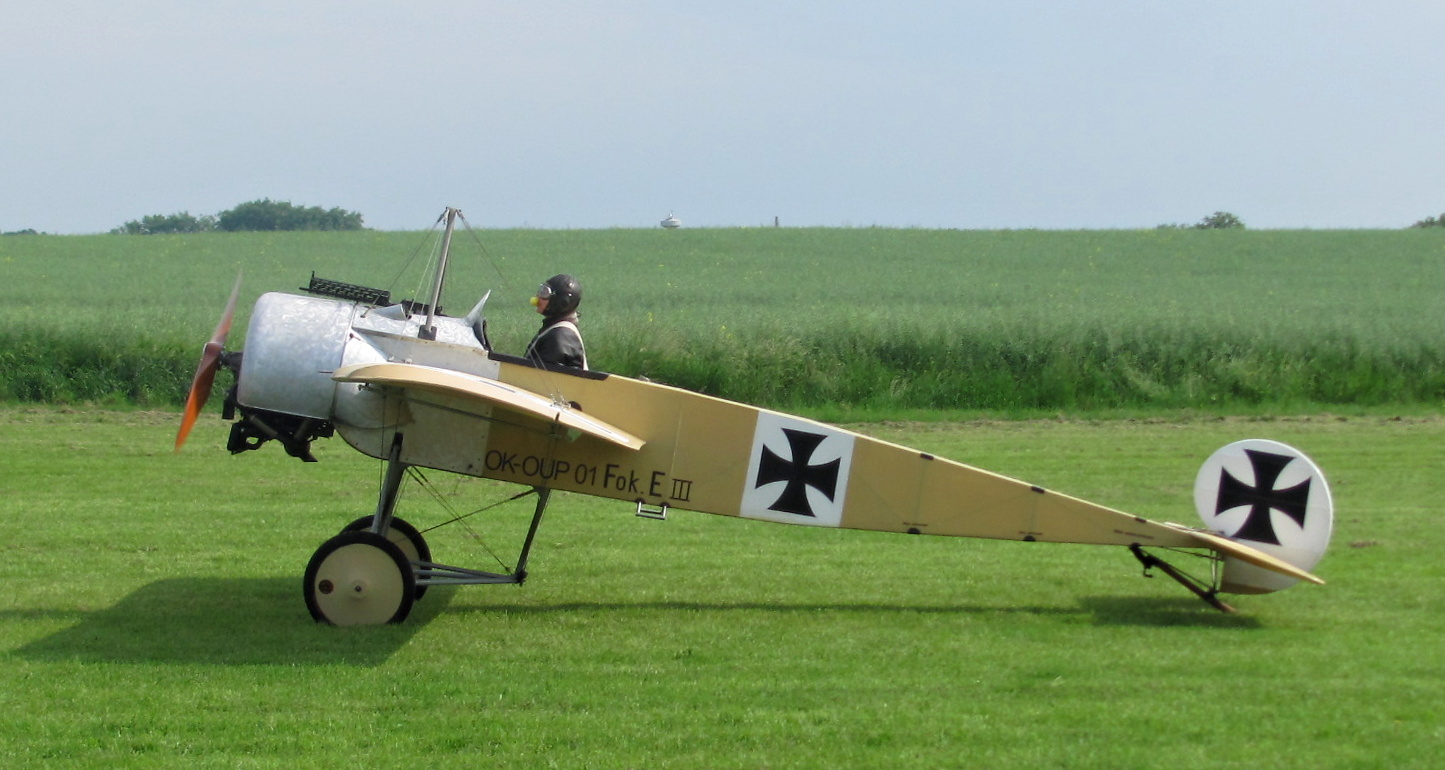Fokker E-III on:
[Wikipedia]
[Google]
[Amazon]
 The Fokker E.III was the main variant of the ''Eindecker'' (literally meaning "one deck")
The Fokker E.III was the main variant of the ''Eindecker'' (literally meaning "one deck")
 The only known surviving original ''Eindecker'', bearing IdFlieg serial number 210/16, was brought down in the Somme area in 1916 by the British and then evaluated by the War Office until it was transferred to the
The only known surviving original ''Eindecker'', bearing IdFlieg serial number 210/16, was brought down in the Somme area in 1916 by the British and then evaluated by the War Office until it was transferred to the
 ;
*''
;
*''
Fokker E.III 634 made 1915
{{Authority control E.III 1910s German fighter aircraft Military aircraft of World War I Single-engined tractor aircraft Mid-wing aircraft Aircraft first flown in 1915 Rotary-engined aircraft
 The Fokker E.III was the main variant of the ''Eindecker'' (literally meaning "one deck")
The Fokker E.III was the main variant of the ''Eindecker'' (literally meaning "one deck") fighter aircraft
Fighter aircraft are fixed-wing military aircraft designed primarily for air-to-air combat. In military conflict, the role of fighter aircraft is to establish air superiority of the battlespace. Domination of the airspace above a battlefield ...
of World War I. It entered service on the Western Front Western Front or West Front may refer to:
Military frontiers
*Western Front (World War I), a military frontier to the west of Germany
*Western Front (World War II), a military frontier to the west of Germany
*Western Front (Russian Empire), a majo ...
in December 1915
Events
Below, the events of World War I have the "WWI" prefix.
January
* January – British physicist Sir Joseph Larmor publishes his observations on "The Influence of Local Atmospheric Cooling on Astronomical Refraction".
*January 1 ...
and was also supplied to Austria-Hungary and Turkey.
Design and development
The E.III was basically an E.II fitted with larger, newly designed wings that had a slightly narrowerchord
Chord may refer to:
* Chord (music), an aggregate of musical pitches sounded simultaneously
** Guitar chord a chord played on a guitar, which has a particular tuning
* Chord (geometry), a line segment joining two points on a curve
* Chord ( ...
of 1.80 meter (70-7/8 in), compared to 1.88 meter (74 in) on the earlier Eindeckers, going back to Fokker's original M.5 monoplane aircraft. The E.III retained the same 75 kW (100 hp) Oberursel U.I engine, and therefore also used the larger diameter "horseshoe" pattern cowling that also mandated the inclusion of the E.II's soffit-like extensions to the sides of the upper nose sheet metalwork, but had a larger 81 L (21.5 gal) drum-shaped main fuel tank just behind the cockpit, which increased the ''Eindecker''s endurance to about 2½ hours; an hour more than the E.II. Most E.IIIs were armed with a single 7.92 mm (.312 in) Spandau LMG 08 machine gun with 500 rounds of ammunition
Ammunition (informally ammo) is the material fired, scattered, dropped, or detonated from any weapon or weapon system. Ammunition is both expendable weapons (e.g., bombs, missiles, grenades, land mines) and the component parts of other weap ...
; however, after the failure of the twin-gun Fokker E.IV
The Fokker E.IV was the final variant of the Fokker Eindecker, ''Eindecker'' fighter aircraft that was operated by Germany during World War I.
Design and development
Given the Fokker designation of M.15, the E.IV was essentially a lengthened F ...
as a viable successor, some E.IIIs were fitted with twin guns.
Fokker
Fokker was a Dutch aircraft manufacturer named after its founder, Anthony Fokker. The company operated under several different names. It was founded in 1912 in Berlin, Germany, and became famous for its fighter aircraft in World War I. In 1919 ...
production figures state that 249 E.IIIs were manufactured; however, a number of the 49 E.IIs were upgraded to E.III standard when they were returned to Fokker's Schwerin factory for repairs.
Operational history
The E.III was the first type to arrive in sufficient numbers to form small specialist fighter units, ''Kampfeinsitzer Kommandos'' (KEK) in early 1916. Previously, ''Eindeckers'' had been allocated singly, just as the E.I and E.II had been, to the front-line '' Feldflieger Abteilungen'' that carried out reconnaissance duties. On 10 August 1916, the first German '' Jagdstaffeln'' (single-seat fightersquadron
Squadron may refer to:
* Squadron (army), a military unit of cavalry, tanks, or equivalent subdivided into troops or tank companies
* Squadron (aviation), a military unit that consists of three or four flights with a total of 12 to 24 aircraft, de ...
s) were formed, initially equipped with various early fighter types, including a few E.IIIs, which were by then outmoded and being replaced by more modern fighters. Standardisation in the ''Jagdstaffeln'' (and any real success) had to wait for the availability in numbers of the Albatros D.I
The Albatros D.I was a German fighter aircraft used during World War I. Although its operational career was short, it was the first of the Albatros D types which equipped the bulk of the German and Austrian fighter squadrons (''Jagdstaffeln'') fo ...
and Albatros D.II
The Albatros D.II was a German fighter aircraft used during World War I. After a successful combat career in the early '' Jagdstaffeln'', it was gradually superseded by the Albatros D.III.
Design and development
Albatros designers Robert Thelen ...
in early 1917.
Turkish E.IIIs were based at Beersheba in Palestine
__NOTOC__
Palestine may refer to:
* State of Palestine, a state in Western Asia
* Palestine (region), a geographic region in Western Asia
* Palestinian territories, territories occupied by Israel since 1967, namely the West Bank (including East ...
while others operated in Mesopotamia during the Siege of Kut-al-Amara
The siege of Kut Al Amara (7 December 1915 – 29 April 1916), also known as the first battle of Kut, was the besieging of an 8,000 strong British Army garrison in the town of Kut, south of Baghdad, by the Ottoman Army. In 1915, its population ...
.
Surviving aircraft
 The only known surviving original ''Eindecker'', bearing IdFlieg serial number 210/16, was brought down in the Somme area in 1916 by the British and then evaluated by the War Office until it was transferred to the
The only known surviving original ''Eindecker'', bearing IdFlieg serial number 210/16, was brought down in the Somme area in 1916 by the British and then evaluated by the War Office until it was transferred to the London Science Museum
The Science Museum is a major museum on Exhibition Road in South Kensington, London. It was founded in 1857 and is one of the city's major tourist attractions, attracting 3.3 million visitors annually in 2019.
Like other publicly funded ...
in 1918. It is currently on display fully assembled, but with its fabric covering removed to illustrate its internal construction.
Operators
 ;
*''
;
*''Kaiserliche und Königliche Luftfahrtruppen
The Austro-Hungarian Aviation Troops or Imperial and Royal Aviation Troops (german: Kaiserliche und Königliche Luftfahrtruppen or , hu, Császári és Királyi Légjárócsapatok) were the air force of the Austro-Hungarian Empire until the e ...
''
* ''Kaiserliche und Königliche Kriegsmarine''
;
*Bulgarian Air Force
The Bulgarian Air Force ( bg, Военновъздушни сили, Voennovazdushni sili) is one of the three branches of the Military of Bulgaria, the other two being the Bulgarian Navy and Bulgarian land forces. Its mission is to guard and p ...
;
*'' Luftstreitkräfte''
*'' Kaiserliche Marine''
**''Marine-Fliegerabteilung''
;
*Ottoman aviation squadrons
The Aviation Squadrons of the Ottoman Empire were military aviation units of the Ottoman Army and Navy.Edward J. Erickson, ''Ordered To Die: A History of the Ottoman Army in the First World War'', "Appendix D The Ottoman Aviation Inspectorate an ...
were supplied with 22 E.III aircraft.
Specifications (E.III)
See also
References
*External links
*Fokker E.III 634 made 1915
{{Authority control E.III 1910s German fighter aircraft Military aircraft of World War I Single-engined tractor aircraft Mid-wing aircraft Aircraft first flown in 1915 Rotary-engined aircraft